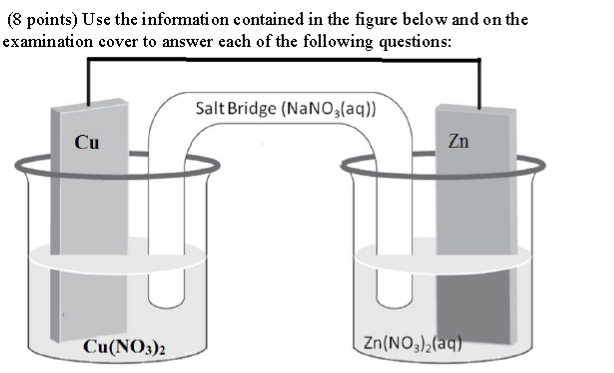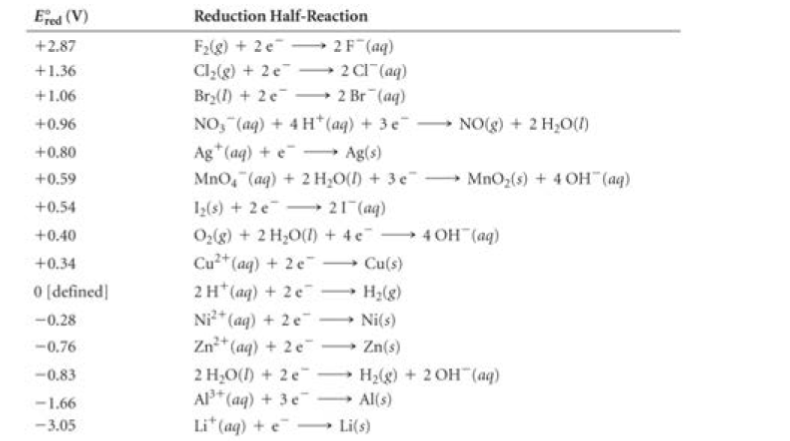Electrochemistry question? (Voltaic Cell)


A: Which electrode is the cathode in the reaction above?
B: Give the half reaction occurring at each of the electrodes below. Make sure it shows the direction the reaction actually proceeds in the cell above.
C: Write a balanced chemical equation describing the total reaction associated with the electrochemical cell.
D: What is the EMF of the cell above if it is operated under standard state conditions?


A: Which electrode is the cathode in the reaction above?
B: Give the half reaction occurring at each of the electrodes below. Make sure it shows the direction the reaction actually proceeds in the cell above.
C: Write a balanced chemical equation describing the total reaction associated with the electrochemical cell.
D: What is the EMF of the cell above if it is operated under standard state conditions?
1 Answer
I will break it down for you so you can understand how to look at these types of questions.
Explanation:
This is a Galvanic cell. Galvanic cells are spontaneous meaning they have a
You have solid
- Since we know that
#"Cu"^(+2)# ions are more likely to be reduced to become#"Cu"(s)# , the#color(red)("Cu electrode is labeled as the cathode")# while the#color(red)("Zn electrode is labeled as the anode")# , where oxidation occurs. (remember the memory aid AN OX, RED CAT)
- If reduction is occurring at the
#"Cu"# cathode (where we know the solution of#"Cu(NO3)"_2# ionizes to give off#"Cu"^(+2)# cations and#"NO"_3^(-1)# anions), this means#"Cu"^(+2)# ions will gain#2e^-# and will deposit onto the#"Cu"# electrode. The half reaction is the following for the left half cell:
- In the right half cell, the
#"Zn"# electrode (which is the anode) will lose#2e^-# and#"Zn"^(+2)# ions will fall out into the solution which already has#"Zn"^(+2)# cations and#"NO"_3^(-1)# ions from the zinc nitrate solution. The half reaction in the right cell is the following:
- If we combine the two half reactions, we get
- Okay. We have established that at the
#"Cu"# half cell, reduction will occur and at the#"Zn"# half cell. oxidation will occur. To find the EMF of the cell, the following equation is going to be used.
Since we were provided
- Use the equation to plug in and solve:

